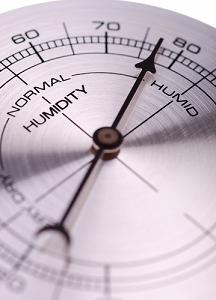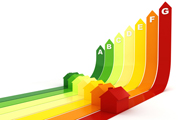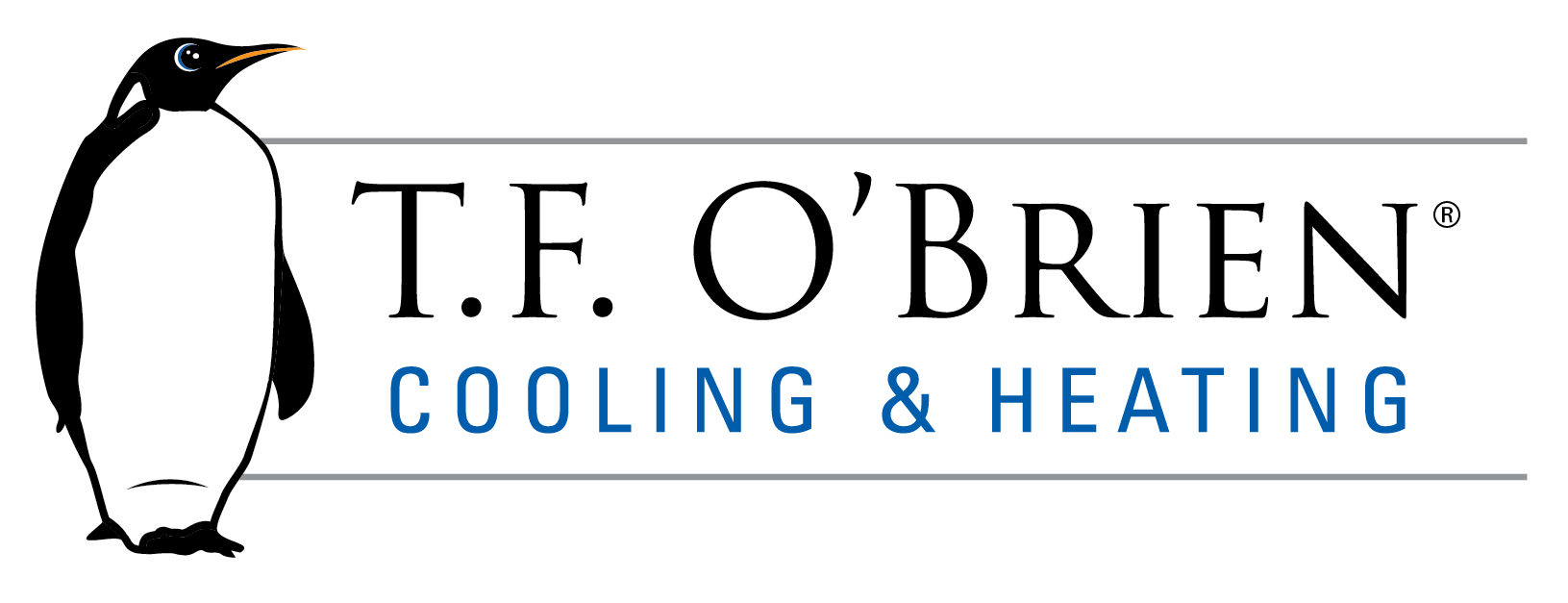 Summer allergies are never pleasant. You can’t control the air outside, but you should be able to be allergy-free in your own home. Allergens from outdoor air can enter your home and circulate through your heating and cooling system, affecting your indoor air quality. Fortunately, there are ways to reduce or eliminate these allergens from your indoor air. Continue reading “Worried About Summer Allergy Season? Here’s How To Further Your Indoor Air Quality”
Summer allergies are never pleasant. You can’t control the air outside, but you should be able to be allergy-free in your own home. Allergens from outdoor air can enter your home and circulate through your heating and cooling system, affecting your indoor air quality. Fortunately, there are ways to reduce or eliminate these allergens from your indoor air. Continue reading “Worried About Summer Allergy Season? Here’s How To Further Your Indoor Air Quality”
Author: tfobrien
Feeling Cooped Up? Here’s How To Help Your Indoor Air Circulation
Ventilation systems can refresh and clean your indoor air, and also improve air circulation. Even if you spend 90 percent of your time indoors (like the average U.S. citizen), a ventilation system can help you feel comfortable and breathe easy.
Unfortunately, the indoor air quality in the typical Long Island home is considered poor by the EPA’s standards. Many more contaminants than you might realize can become trapped indoors, especially in homes that don’t have adequate circulation. A few examples include:
- Dust
- Dust mites
- Pollen and allergens
- Mold and spores
- Viruses, bacteria and other microorganisms
- Radon, the second leading cause of lung cancer in the US after tobacco smoke (according to the American Lung Association)
- Chemical fumes from cleaners, air fresheners, paints, varnishes, adhesives and more
- Off-gassing from pressed wood, carpets and construction materials
Even the carbon dioxide exhaled by residents can accumulate to unhealthy levels.
Fortunately, Long Island homeowners have a variety of tools at their disposal to improve indoor air circulation. Balanced ventilation systems, such as energy recovery ventilators, keep air circulation up by expelling stale air and drawing in fresh air. They also remove contaminants and humidity from the incoming air stream. Some ventilation units are complicated systems with their own ducts, but others can be installed conveniently with your pre-existing ducts.
Air filters are a key element when it comes to keeping your air clean and your system efficient. A HEPA filter is designed with more surface area than a standard filter, and can trap 99.97 percent of the most minuscule particles, 1/300th the diameter of a hair. But before you rush to install a HEPA filter, give us a call. The highest efficiency filters aren’t ideal for every system. If it’s too restrictive, it can actually decrease air circulation.
Air circulation and quality can also be compromised if your ventilation system is not well maintained. Preventive maintenance keeps your system clean and efficient, and facilitates smooth airflow through all components, including your ductwork. Call T. F. O’Brien for more information, or to schedule your preventive maintenance today.
Our goal is to help educate our customers about energy and home comfort issues (specific to HVAC systems). For more information about indoor air circulation and other HVAC topics, download our free Home Comfort Resource guide.
T.F. O’Brien services the Long Island, New York area. Visit our website to see our special offers to get started today!
Have Your Ductwork Design And Installation Inspected For Better Efficiency
 Problems in the ductwork design and installation in Long Island homes are one of the leading reasons they lose heat. Whether you are getting a new air system or you are not completely satisfied with your current system’s efficiency, getting your ductwork inspected can help you save money on energy bills.
Problems in the ductwork design and installation in Long Island homes are one of the leading reasons they lose heat. Whether you are getting a new air system or you are not completely satisfied with your current system’s efficiency, getting your ductwork inspected can help you save money on energy bills.
Your ductwork is responsible for distributing conditioned air throughout your home. Up to 15 percent of air that you have already paid to condition can be lost before it ever reaches its destination.
Ductwork design and installation usually includes ductwork that is concealed within walls or floors, but they can also be installed in dropped ceilings or in room corners where they are hidden. It is inevitable that some air will escape; however, by avoiding installation in areas that do not need to be cooled, like the attic or basement, unnecessary air losses are prevented.
Duct supply configurations work to push conditioned air through your home and revolve around two different premises: trunk and branch or radial. Either type works well to supply air within a conditioned space, and their designs are intended to distribute a balanced supply of air throughout the home and increase efficiency.
There are two common duct return configurations that get efficient results:
- A return duct is installed within each room that directs air back to the heating and cooling systems.
- A central return grille on each floor of a home returns air.
Without a balanced air flow through supply and return ducts, your heating and cooling systems have to work harder and longer to comfortably condition the home.
An inspection by an HVAC professional will spot any problems and provide you with solutions to keep your air system efficient. These may be as simple as keeping ducts closed in unused rooms or could entail insulating your ducts in the winter so your warm air doesn’t get cold.
If you have any other questions about the ductwork design and installation in your Long Island home, contact T.F. O’Brien Heating and Cooling today.
Our goal is to help educate our customers about energy and home comfort issues (specific to HVAC systems). For more information about ductwork and other HVAC topics, download our free Home Comfort Resource guide.
T.F. O’Brien services the Long Island, New York area. Visit our website to see our special offers to get started today!
Crawl Spaces Can Be Laden With Heat — Use These Tips To Trap Heat Before It Enters Your Home
Crawl spaces have a big impact on home performance. When the summer sets in around Long Island, heat can collect in your crawl space, rising up through the floor into your living space. This means your cooling system has to work harder to make up for the extra heat pouring into your home. Installing insulation beneath your floor can help prevent this heat transfer. Continue reading “Crawl Spaces Can Be Laden With Heat — Use These Tips To Trap Heat Before It Enters Your Home”
Attics Score High In Energy Loss, But Attic Sealing Scores Higher In Energy Efficiency
As a homeowner, you probably understand the importance of insulation in preventing energy from leaking through the attic. However, sealing out moisture and closing up air leaks are also important. Attic sealing can reduce energy loss and moisture problems and can improve your indoor air quality.
Moisture finds its way into your attic from several sources. Household vents, such as bathroom fans, are a particularly common culprit, directing moist air into the attic instead of outside. Water can damage insulation, and can turn your attic into a breeding ground for microorganisms, such as mold, reducing your indoor air quality.
Attic sealing can help protect your home and save money. Some ways you can make sure you have quality attic sealing:
- Having a quality roof. Making the investment for a high-quality, weatherproof roof is important. It’s simplest during construction, but an existing roof can be weatherproofed.
- Identifying leaks. Your contractor should check every place the ceiling and attic floor are penetrated. Leaks are often located around light or plumbing fixtures, chimneys, ducts, wires and near entryways. The best time to seal the attic is before adding insulation, because insulation often covers some of the worst sites of leaks.
- Sealing smaller leaks with caulk. It may even be beneficial to add caulk around pipes and ceiling penetrations that aren’t currently leaking. Larger leaks can be sealed with a spray foam, and weather stripping can also help. Sealing around chimneys requires fire-resistant materials, such as high-temperature caulk.
- Ensuring there are sufficient barriers between the attic and the ceiling. Moisture and humidity from kitchens and bathrooms commonly drifts right up into the attic.
After air and water leaks are sealed, there are other steps you can take to increase your attic’s efficiency, such as installing a radiant barrier to reduce solar gain and using the right insulation. The Energy Star program recommends total insulation valued at R-38 to R-60 for attics in Long Island.
For professional quality attic sealing that can increase energy savings and make your home a healthier environment, call T.F. O’Brien. We’ve been proud to serve Long Island since 1934.
Our goal is to help educate our customers about energy and home comfort issues (specific to HVAC systems). For more information about attic sealing, energy efficiency and other HVAC topics, click here to download our free Home Comfort Resource guide.
T.F. O’Brien services the Long Island, New York area. To get started, get a quote from us or check out our special offers.
Ceiling Fans Enhance Home Comfort — Let Them Work For You
 Ceiling fans produce a wind chill effect that wicks moisture and body heat away from your skin. They don’t actually lower the temperature of a room, but you still feel several degrees cooler. Thanks to this wind chill factor, a ceiling fan can make it possible to raise your thermostat by as much as to 4 degrees, generating energy savings without sacrificing comfort. If you use ceiling fans when the weather is milder, during autumn and spring, you may be able to turn off the air conditioner completely. Continue reading “Ceiling Fans Enhance Home Comfort — Let Them Work For You”
Ceiling fans produce a wind chill effect that wicks moisture and body heat away from your skin. They don’t actually lower the temperature of a room, but you still feel several degrees cooler. Thanks to this wind chill factor, a ceiling fan can make it possible to raise your thermostat by as much as to 4 degrees, generating energy savings without sacrificing comfort. If you use ceiling fans when the weather is milder, during autumn and spring, you may be able to turn off the air conditioner completely. Continue reading “Ceiling Fans Enhance Home Comfort — Let Them Work For You”
Ocean Air Can Contribute To A More Comfortable Home, But Dehumidification Systems Do Even Better
 Ocean breezes can provide some relief from the humid summer weather around Long Island. Your air conditioner can also help by removing a certain amount of moisture from indoor air. However, it only does so as a byproduct of cooling your home, and isn’t designed to handle high levels of humidity. For that, you might need a dehumidification system. Continue reading “Ocean Air Can Contribute To A More Comfortable Home, But Dehumidification Systems Do Even Better”
Ocean breezes can provide some relief from the humid summer weather around Long Island. Your air conditioner can also help by removing a certain amount of moisture from indoor air. However, it only does so as a byproduct of cooling your home, and isn’t designed to handle high levels of humidity. For that, you might need a dehumidification system. Continue reading “Ocean Air Can Contribute To A More Comfortable Home, But Dehumidification Systems Do Even Better”
Evaporator Coils 101: How They Affect Air-Conditioning System Airflow
Dependable air conditioning is essential for Long Island homeowners this time of year. Also essential: making sure your cooling system will function properly for the duration of the season, keeping your home and family comfortable. It helps to have a little working knowledge about your A/C. Evaporator coils, which play a crucial role in cooling your home, are a good place to start. Continue reading “Evaporator Coils 101: How They Affect Air-Conditioning System Airflow”
Summer Energy-Savings Tips For Long Island Residents
 If the Long Island summer heat and humidity don’t make you uncomfortable, your cooling bills just might. But increasing your energy savings doesn’t mean you have to sacrifice comfort. Here are a few summer energy savings tips: Continue reading “Summer Energy-Savings Tips For Long Island Residents”
If the Long Island summer heat and humidity don’t make you uncomfortable, your cooling bills just might. But increasing your energy savings doesn’t mean you have to sacrifice comfort. Here are a few summer energy savings tips: Continue reading “Summer Energy-Savings Tips For Long Island Residents”
New Regulations Push Air-Conditioning Refrigerant Options To New Heights: R410-A
For years, R22 air conditioning refrigerant has been used in air conditioners and heat pump systems. Now, as more and more people are becoming concerned about the depletion of the ozone layer, this refrigerant is being phased out. Its replacement in most systems is R410-A, which has been approved by the Environmental Protection Agency as a safe alternative. Continue reading “New Regulations Push Air-Conditioning Refrigerant Options To New Heights: R410-A”
